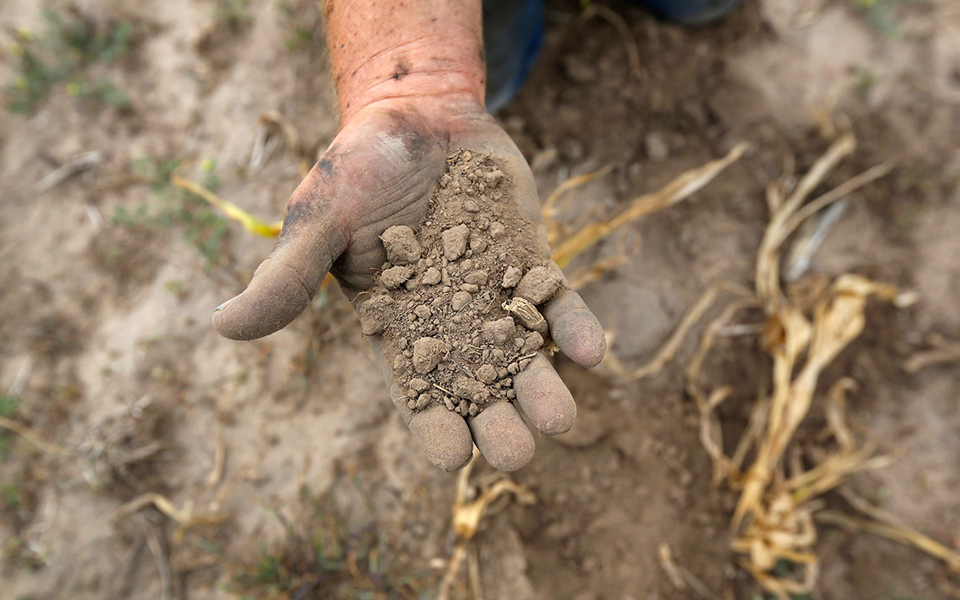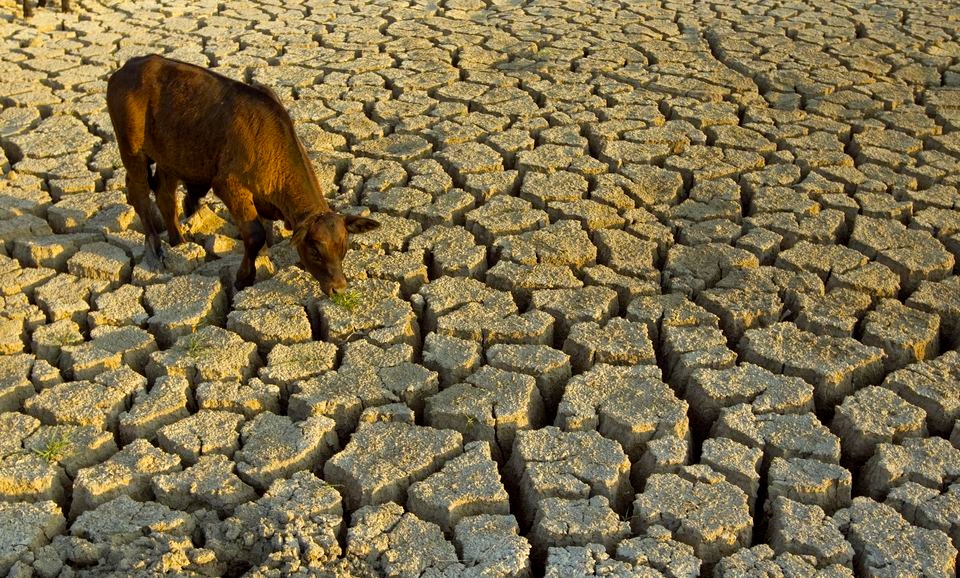Matt Russell has seen strange weather before. As a fifth-generation Iowa farmer, he's used to being at the whims of the skies. But ominous changes are underway at his Coyote Run Farm, and lately, he's been trying to cope with "the wrong weather at the wrong time."
Like Matt, I grew up as the fifth generation on my family's farm. In fact, my 83-year-old grandfather, Art, is out planting corn with my dad this week. In Art's eight decades in the field, he's seen his share of tough times. When he was just a little boy, he saw his family's crops wither up, die and blow away into the Dust Bowl. Like many American families, the Great Depression tested our family's commitment to farming.
But we persevered, and out of the devastation of the Dust Bowl, a new era of hope and progress for American farmers was born. Under the leadership of the U.S. Department of Agriculture, farmers began viewing soil conservation as a key risk management tool.
On our farm and many others, we learned that protecting the soil was paramount to surviving future dry years. And although dry times such as the 1950s and 1980s were challenging, the conservation lessons learned from the Dust Bowl era lessened their impact on my family's operations.
Now, we are at another critical moment for agriculture. Climate change is bringing more frequent and severe weather challenges, unlike any that farmers have seen before, and already farmers are feeling the effects. Countless scientists agree that climate change will affectevery part of our food system — from crop yields to food processing and distribution. More dry days and hot nights will stress already limited water resources. And when it does rain, it will pour, exacerbating soil erosion.
Farmers will need to confront new challenges from weeds, diseases and pests. But farmers don't need a scientist to tell them times are tough. They can just look out their windows. Listen to what Arlyn Schipper, a Conrad, Iowa farmer, has to say.
So how will we confront the climate challenge facing American farmers? Will we ignore the ominous reality of climate change? Or will we take steps to improve farms' resiliency to extreme weather and prevent the worst impacts of climate change?
We know what needs to be done. We learned after the Dust Bowl that farmers have one of the best "insurance policies" right beneath their boots — their very own soil. Healthy soil is more resilient to extreme weather events such as droughts and floods because it can filter and hold more water. The new "normal" of climate change calls for us to redouble our efforts to build healthy soil.
NRDC's "Soil Matters" report describes how we can build farms that are more resilient to climate change by encouraging low risk, water-smart practices that regenerate soil. Under NRDC's proposal, farmers who adopt proven techniques, like cover cropping, to reduce their risk of crop loss would receive a discount on their crop insurance policies. This could be done under existing law, and could have widespread benefits for farmers, taxpayers and the environment.
But the longer we wait, the harder the job will be. Scientists agree that the increased concentration of heat-trapping carbon pollution in our atmosphere is the key reason that our climate is changing, and power plants are responsible for nearly half of that pollution. The U.S. Environmental Protection Agency has proposed the first carbon pollution limits for future power plants, and is on track to propose limits for existing power plants by early June. These new protections will help reduce the carbon pollution that is threatening American agriculture and our food security.
After the Dust Bowl, American farmers didn't throw up their hands in despair. They got to work, planting windbreaks, building terraces and making conservation a way of life. Now it's our turn. Climate change is a tough challenge, but we know what we need to do. We need to regenerate our landscapes to build resilient farms, and we need protections from the power plant carbon pollution that's threatening our food supply. It's time to act. The next five generations of farmers depend on it.
3 WAYS TO SHOW YOUR SUPPORT
- Log in to post comments















